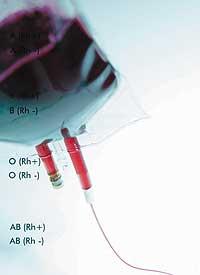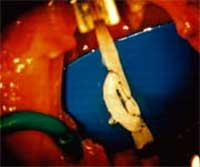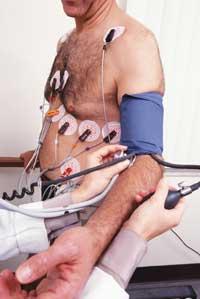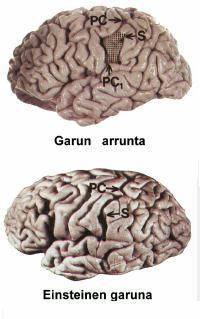Safer cardiac technique
2004/07/01 Atxotegi Alegria, Uhaina - Elhuyar Zientziaren Komunikazioa Iturria: Elhuyar aldizkaria

Operations on the Aorta artery are not easy. In these operations it is necessary for the patient to hibernate at 15ºC to keep the heart and circulation stopped. But the aorta is the main artery that leaves the heart and the origin of all arteries in the circulatory system. Therefore, during the intervention a blood recirculation should be performed, especially to ensure that it reaches the brain to prevent the death of the patient.
Currently, through a tube, blood is brought to the brain by the femoral artery of the leg, called perfusion technique, and surgeons only have half an hour for intervention. The technique used in Policlínica San José de Vitoria-Gasteiz has managed to increase safety and double the intervention time. This prevents brain injuries and neurological effects.
In Policlínica San José an axillary artery has been used to drive blood to the brain. This artery is associated with the carotid artery that supplies blood to the head, so blood reaches the brain through the usual pathways. That is the main advance.
The step-by-step technique
The intervention of an aortic aneurysm requires first a cooling of the patient, a deep hypothermia. The body cools down to 15 degrees to stop blood circulation, breathing, and brain activity, and not harm the rest of the organs or the brain itself. This process takes 35 minutes.
In this cooling process an oxygenating agent is used that passes the blood through an external circuit to the body to perform heat exchange. At the same time, the patient's brain is protected from ice.

The novelty has been the application of a selective cerebral perfusion system when the patient has cooled, the heart, circulation, brain and breathing have stopped. This system sends blood to the brain through a tube that is placed in the axillary artery, with the rest of the blood circulation stopped.
Once the patient has been shown to hibernate and blood reaches the brain, the operation begins. In this case, surgeons have removed the diseased part of the aorta and placed a synthetic prosthesis to perform the functions of a new aorta. This process takes an hour.
After the placement of the prosthesis the entire blood circulation is recovered and the body heating system is activated (this process takes 50 minutes). Finally, when the functioning of the heart is considered appropriate, all tubes, perfusion circuit, etc. are removed. and the operation is over.
Deep hypothermia is in danger. For example, it can cause neurological injuries. It can delay neurological lesions but cannot predict them accurately. Based on clinical experiences, researchers say that at 15ºC the heart can remain completely for 30 minutes without neurological problems. The patient is able to stay 45 minutes in this situation. However, after this time, the risk of neurological problems is higher and usually doctors do not risk. If the operation necessarily takes more than 40 minutes, because the work of the surgeon is longer, other methods of brain protection should be used. Currently, selective brain perfusion would be the most effective and safe method for the brain to suffer no injury. In addition to neurological risks, trying to cool the human body can damage other organs such as the kidneys and lungs. Blood clotting may also occur. |
Deep hypothermia The main objective of deep hypothermia (hibernation state) is to slow the heart and circulation of the patient so that the surgeon can use special techniques. Hypothermia reduces all biochemical reactions and metabolic activity. This reduces oxygen consumption and basal metabolism, always protecting the brain and vital organs. To reach the depth of hypothermia, blood passes through an external circuit to the body. This circuit, similar to a centrifugal pump, performs the same function as a lung and allows the exchange of heat to cool the patient's blood. Once the operation is completed, the same method is used to pass the heart from cold to heat, that is, the same circuit is used. |

Gai honi buruzko eduki gehiago
Elhuyarrek garatutako teknologia





